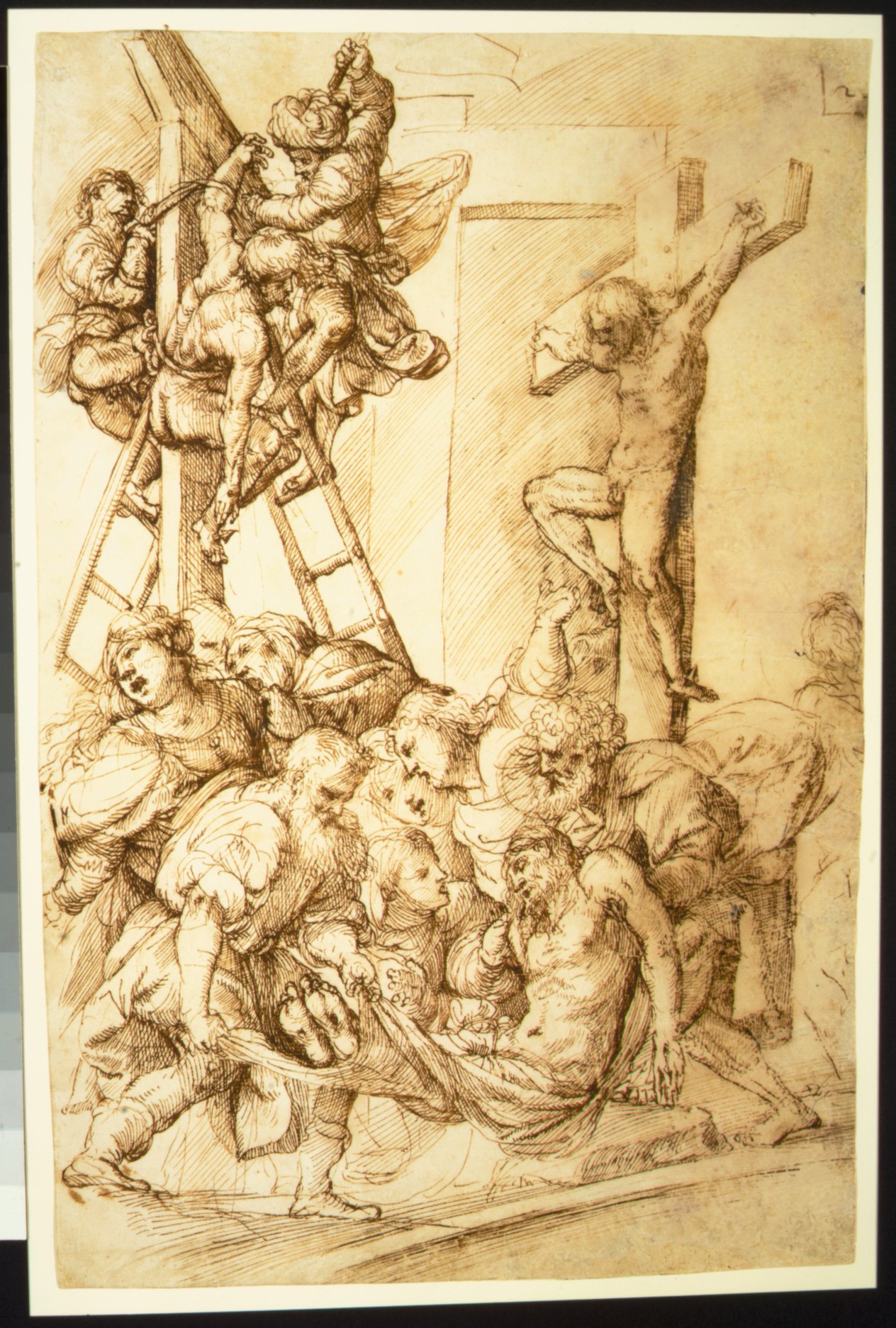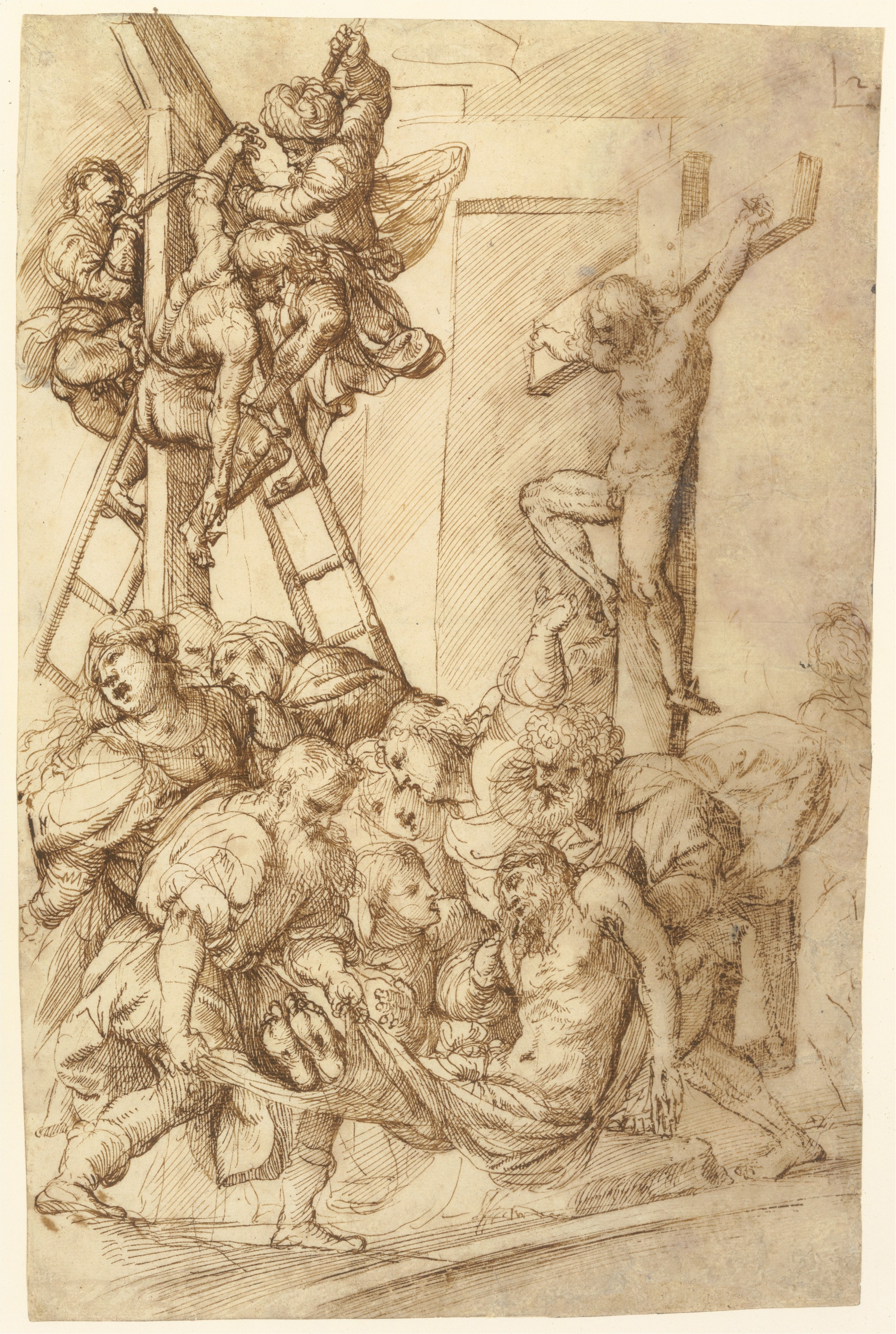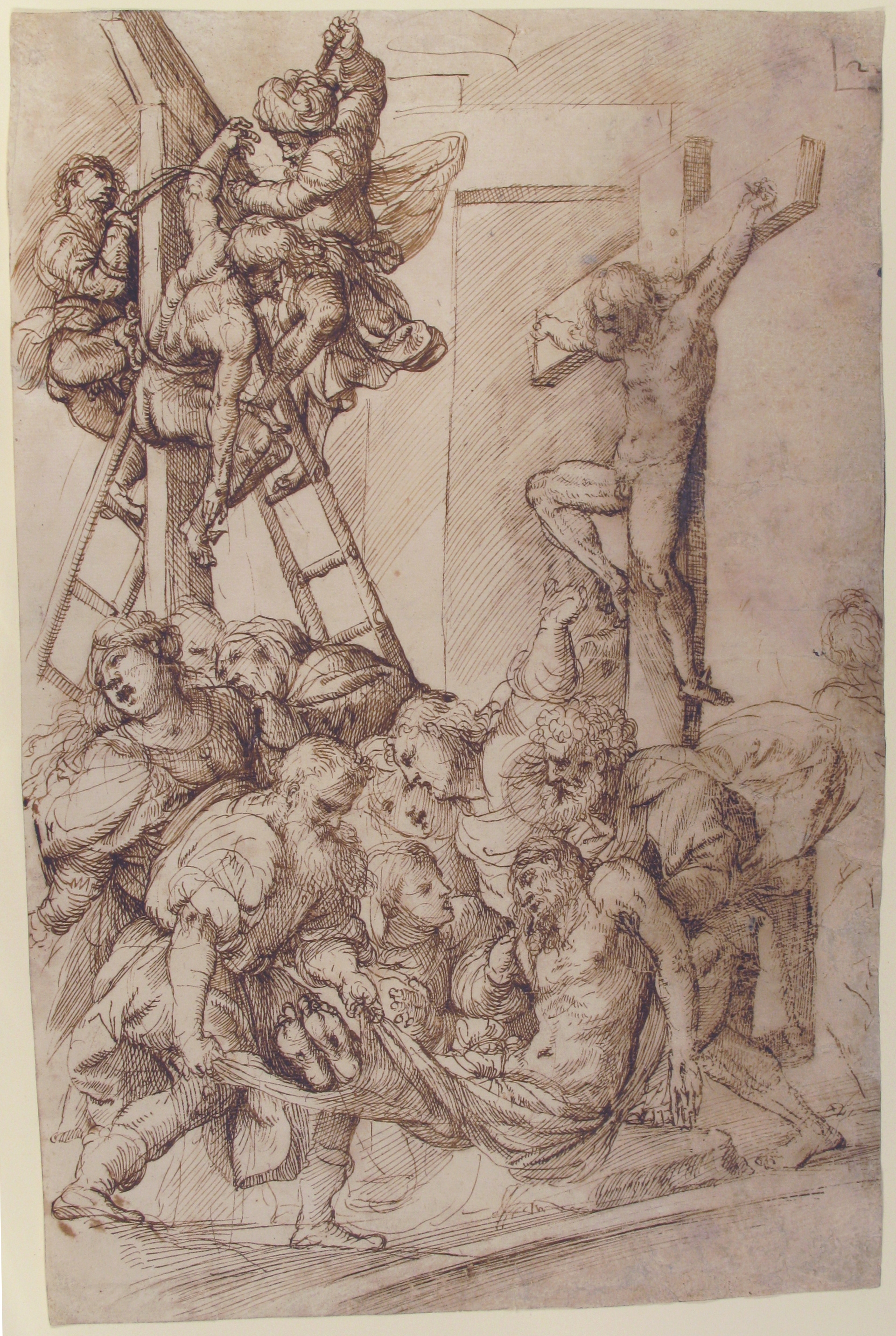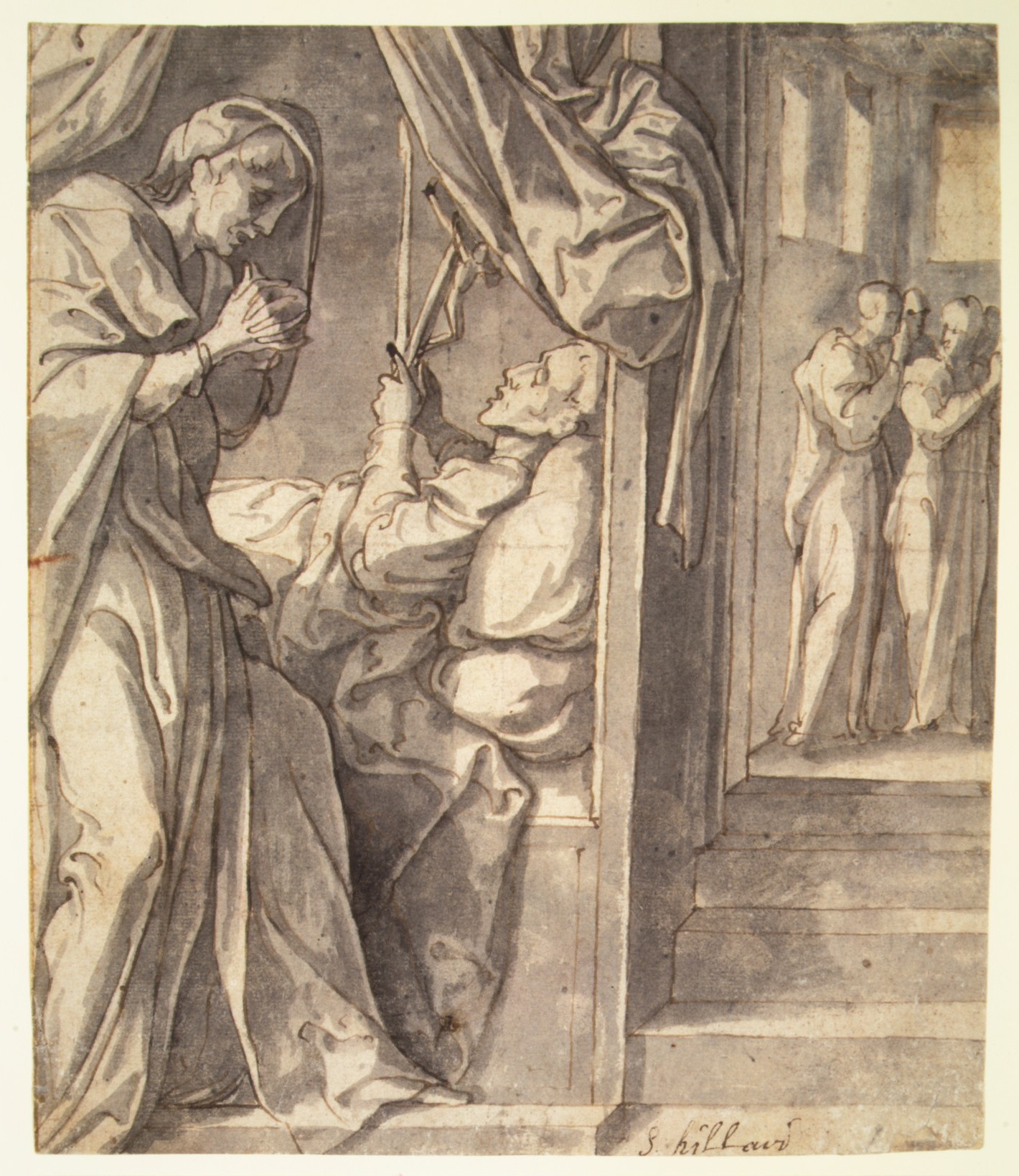The Deposition from the Cross
Domenico Campagnola Italian
Not on view
This intense scene of grief portrays the body of the dead Christ (just taken down from the Cross) dramatically foreshortened in the foreground and a group of mourners gathering around to prepare his body for burial. At upper left, the distorted corpse of one of the thieves who was crucified with Christ is seen actually being detached from his cross, and the action vividly conveys to the viewer the brutality of such an execution. Domenico Campagnola was the adopted son of the Venetian painter and printmaker Giulio Campagnola (ca. 1482-after 1515) and the drawing's highly expressive, graphic manner of parallel hatching and cross-hatching of shadows with the pen also seems typical of Campagnola's masterful prints.
First published by Hans Tietze in 1949 (see here 'References' for full bibliography), this study for a 'Deposition' is an outstanding example of the draftsmanship of Domenico , who was one of the leading graphic artists in Titian's circle. Although he was also a painter, Campagnola was much more accomplished as a printmaker and draftsman, especially during the 1520s, when the examples of Giorgione, Titian, and Domenico's mentor Giulio Campagnola were fresh in his mind. In this sheet, the artist constructed an elaborate and dynamic composition in a manner that recalls contemporary prints by Baldung in its asymmetry, expressionistic gestures and facial characterizations, and lack of concern for accurate spatial perspective. It is among the boldest and most ambitious compositions that Campagnola attempted and-although the handwriting is Titianesque-it displays a welcome individualism of form and expression rarely found in his work. In its lively pen strokes and dramatic composition it is among the most impressive drawings by the artist.
Due to rights restrictions, this image cannot be enlarged, viewed at full screen, or downloaded.
This artwork is meant to be viewed from right to left. Scroll left to view more.







